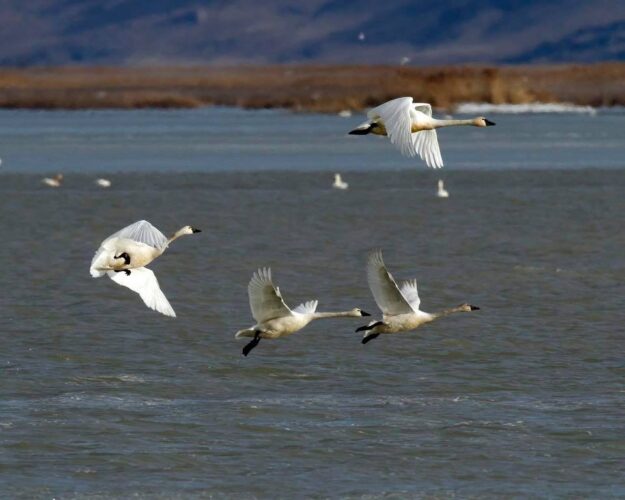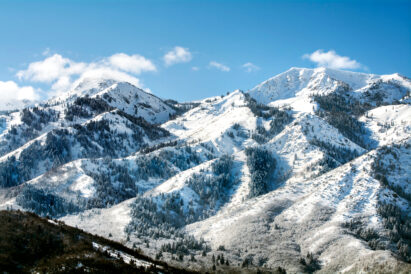What hunters need to know for Utah’s 2025 waterfowl season

The early morning air is crisp and still. From your blind at the edge of a lake, you hear the faint sound of wings overhead. A flock of ducks is headed your way, and your pulse quickens. For many Utah hunters, this scene signals the start of one of the most anticipated times of the year — waterfowl season.
With the 2025 hunting season about to begin, the Utah Division of Wildlife Resources is reminding hunters to prepare properly before heading to the marsh.
Licenses, stamps and HIP number
Except for tundra swans — which required a permit from a drawing that closed in July — waterfowl hunts are open to anyone with a current hunting or combination license. In addition, hunters must register for a free harvest information program, or HIP, number before hunting any waterfowl or migratory game birds. Registration is available on the DWR website.
Anyone 16 and older must also carry a federal migratory bird hunting and conservation stamp — commonly called a “duck stamp.” Both physical stamps (available at post offices, license agents, and by phone) and electronic versions are valid. Electronic stamps can be purchased online through the DWR license portal and stored in the Utah Hunting & Fishing app or even in your phone’s digital wallet.
“Federal duck stamps help fund wildlife conservation across the U.S., with 98% of the purchase fee going directly to help acquire and protect wetland habitat and purchase conservation easements for the National Wildlife Refuge System,” said Jason Jones, DWR waterfowl and migratory game birds coordinator.
Duck hunting outlook
Local duck populations are looking strong, with wetland managers reporting excellent duck production on several Utah waterfowl management areas, or WMAs. However, duck numbers across North America remain slightly below the long-term average due to several years of drought and reduced nesting habitat.
“Hunters may see fewer migrating ducks than they have in the past decade,” Jones said. “But water conditions on the Great Salt Lake’s eastern shore are in good shape, and local production — especially for cinnamon teal — was excellent this year.”
Scouting is one of the most effective ways to improve success. Hunters are encouraged to visit potential hunting areas ahead of time to see where ducks are feeding and resting.
Jones also recommends learning about the habitats preferred by different duck species. Diving ducks like canvasbacks and redheads frequent large, open waterbodies, while puddle ducks such as teal and shovelers prefer shallow wetlands.
Using calls can also help bring ducks within range. While most hunters rely on a traditional mallard hen call, experimenting with pintail or wigeon whistles can give hunters an edge. And a good retriever can make finding downed birds much easier, especially in thick cover.
Duck season runs Oct. 4-Jan. 17 in Utah’s northern zone and Oct. 11-Jan. 24 in the southern zone. Youth hunts are scheduled for Sept. 20 (north) and Sept. 27 (south).
Goose hunting outlook
Canada goose numbers remain strong in the Pacific Flyway, which includes Utah. Biologists expect hunters to see plenty of geese early in the season, with migrators arriving in mid-to-late November.
“Calling is a very important part of goose hunting,” Jones said. “Geese are very social birds, so being able to sound like a goose can help hunters harvest more birds.”
Seasons for dark and white-fronted geese vary slightly by region, with most running from early October through January, and some Wasatch Front areas extending into mid-February. Light goose hunting continues into March in some areas.
Hunters are reminded that most light goose hunting takes place on private property, so securing landowner permission is essential.
Swan hunting
Utah is one of only nine states that allow swan hunting. Tens of thousands of tundra swans migrate through Utah each fall, stopping at traditional staging areas such as the Bear River Migratory Bird Refuge.
Hunters must be careful to distinguish tundra swans from trumpeter swans, which cannot legally be harvested in Utah.
“It’s important to know the difference — not only in appearance but in sound,” Jones said. “Trumpeter swans are larger, lack the yellow near the eye, and make a trumpet-like call.”
Swan hunters are required to check in harvested birds at a DWR office or the Bear River Refuge. Those who mistakenly take a trumpeter swan face citations and several years of ineligibility for future permits.
The tundra swan season runs Oct. 4-Dec. 14, unless the federal trumpeter swan quota is reached earlier.
Where to hunt
Utah has more than 20 waterfowl management areas statewide, most of which open for scouting on Sept. 20. Water levels are good this year, though hunters should check conditions online before planning a hunt, especially if launching an airboat.
The Bear River Migratory Bird Refuge also provides excellent hunting opportunities, though watercraft access may be limited this season due to drought.
Utah Waterfowl Slam
For hunters looking for an extra challenge, the Utah Waterfowl Slam offers 10 unique achievement levels, such as harvesting specific species within a time frame. Participants can earn colorful collectible leg bands, and proceeds go toward habitat improvements on WMAs.
Be prepared and enjoy the season
Despite ongoing drought conditions affecting some wetlands, the DWR expects a good waterfowl season for hunters willing to scout and adapt.
For season dates, bag limits, and zone boundaries, visit the Utah Waterfowl and Migratory Game Birds Guidebook at wildlife.utah.gov.



